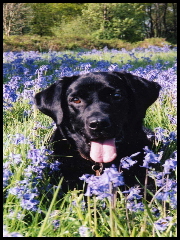
 |
 |
 |
 |
 |
 |
 |
 |
 |


Heard the story of dog evolution? That primitive man fostered wolf pups and then bred them to be tame so they could protect the village and help hunt the cattle?
On face value this theory seems ok, until we start looking closer beneath the surface. Would you fancy nursing a wolf pup with 28 needle-sharp milk teeth!! They would still need to suckle milk as they would need to be fostered before the eyes and ears open at around ten days.

Any wolf keeper will explain how wolf pups may be tamed if they are around humans from a very young age, however, ‘tame’ is different from ‘domesticated’. When the ‘tame’ wolf pups reach maturity, they revert to wild type and head for the hills in search of a mate. But primitive man could have built an enclosure to keep the wolves from escaping (Out of wood and rock? To stop a full-grown wolf?), or broken their legs to disable them (Not much use for hunting…). Then, you would need several thousand captive wolves to facilitate the Primitive Human Dog-Domestication Captive Wolf-Breeding Program to get the natural mutations that would make the domestic dog. A domestic dog that has less stamina, a smaller brain, and a weaker jaw for hunting prey. Would it not have been easier just to trap and domesticate the cattle??!!!!
A ‘tame’ wolf at the
UK Wolf Conservation Trust
- Not ‘domesticated’ & definitely not a dog!
Modern research shows that domestic dogs did indeed evolve from wolves.
BUT it was all on the wolves’ terms. They began scavenging round the primitive human settlements eating all the food scraps and human waste, the ‘tamer’ wolves could get closer to the humans and so got best pickings. They also did not run away as far or for so long as the more timid wolves. They were healthier because of their better diet and so had more successful litters, passing on their mutated genes for coloured coats and floppy ears and curly tails – the domestic dog was born. And we can still see these domestic dogs today in developing countries, scavenging on the village dump. They live in loosely based groups with little need to establish hierarchy. When I look at my greedy Labrador scavenging in the park, dogs really haven’t come very far at all from their tramp ancestors!
Inappropriate dog behaviours may include:
- Pulling on the lead
- Ignoring commands
- Hyperactivity
- Barking/whining
- Anxiety/fears/phobias
- Travelling problems
- Aggression
- Housetraining or adult toileting problems, including ingestion of faeces (copraphagia)
- Possessiveness/stealing
- Problems when left alone
- Destructiveness
- Obsessive behaviours i.e. licking, self mutilation, tail/shadow chasing
It is important to remember that all behavior shown by your dog will be perfectly normal for your dog, they are just not normal to us! I will not ask you to ‘dominate’ your dog or make it suffer strict rules. If you like having Fido on the bed and this is not causing issues, go ahead, it is your dog! I assess every dog in its family as an individual; no two dogs are the same.